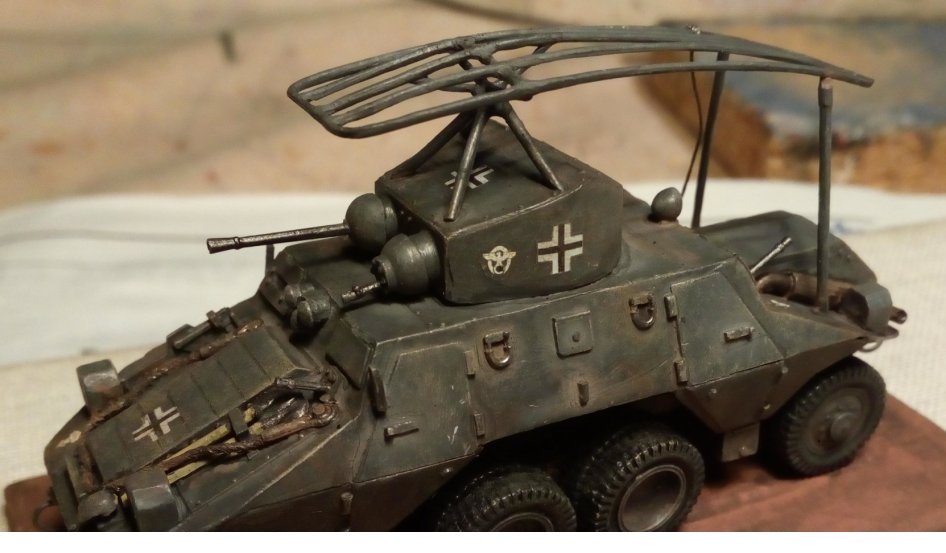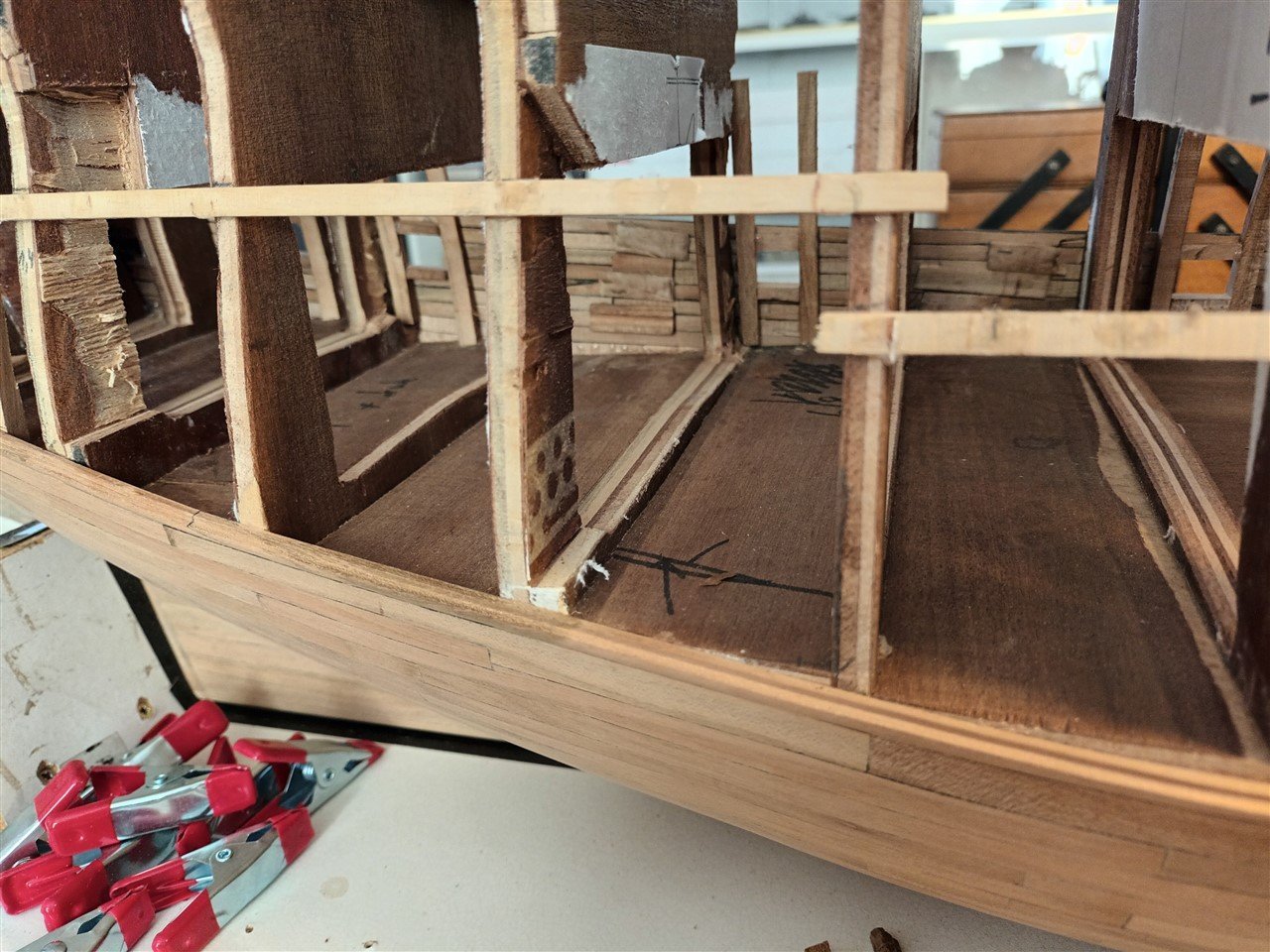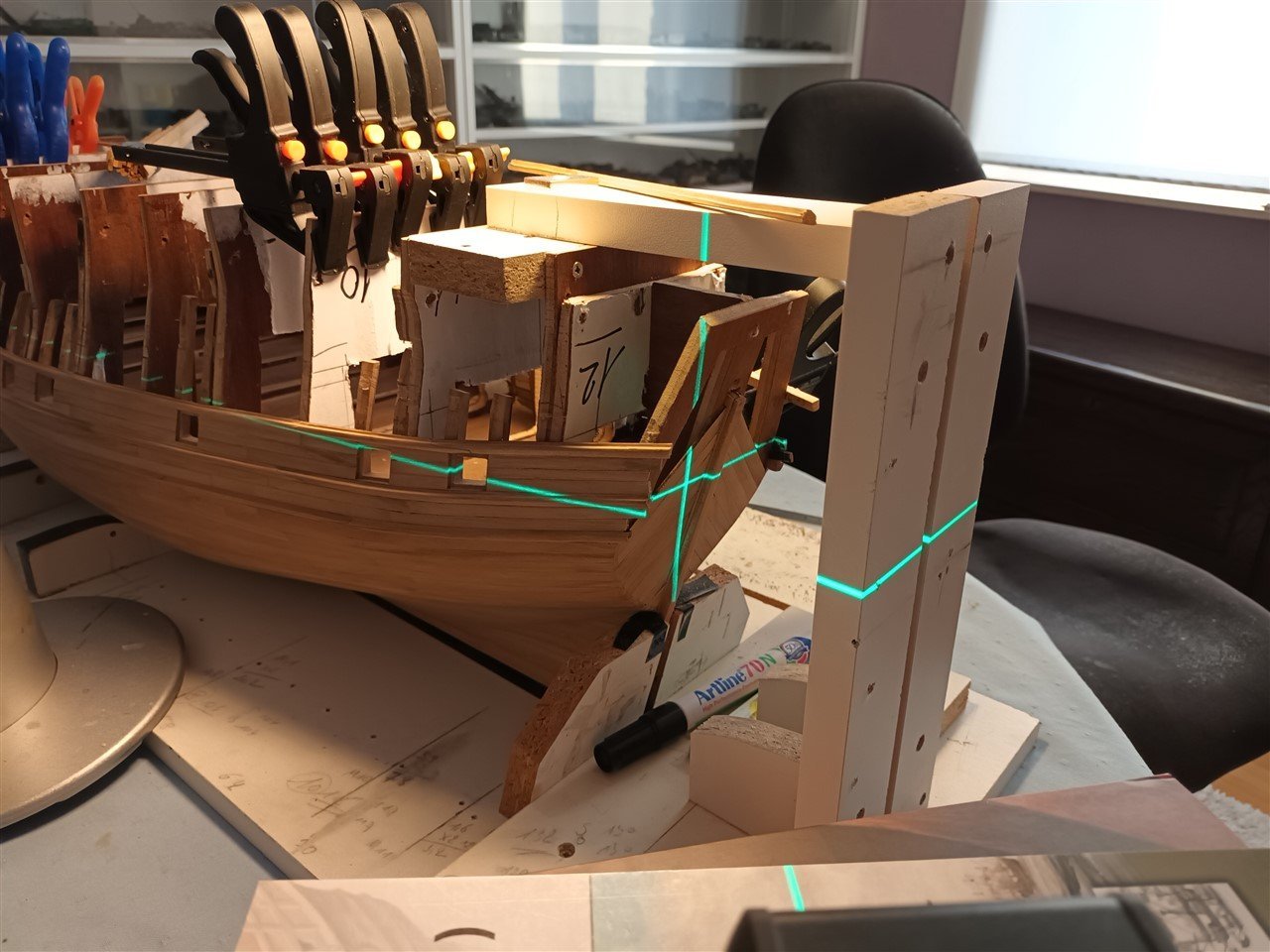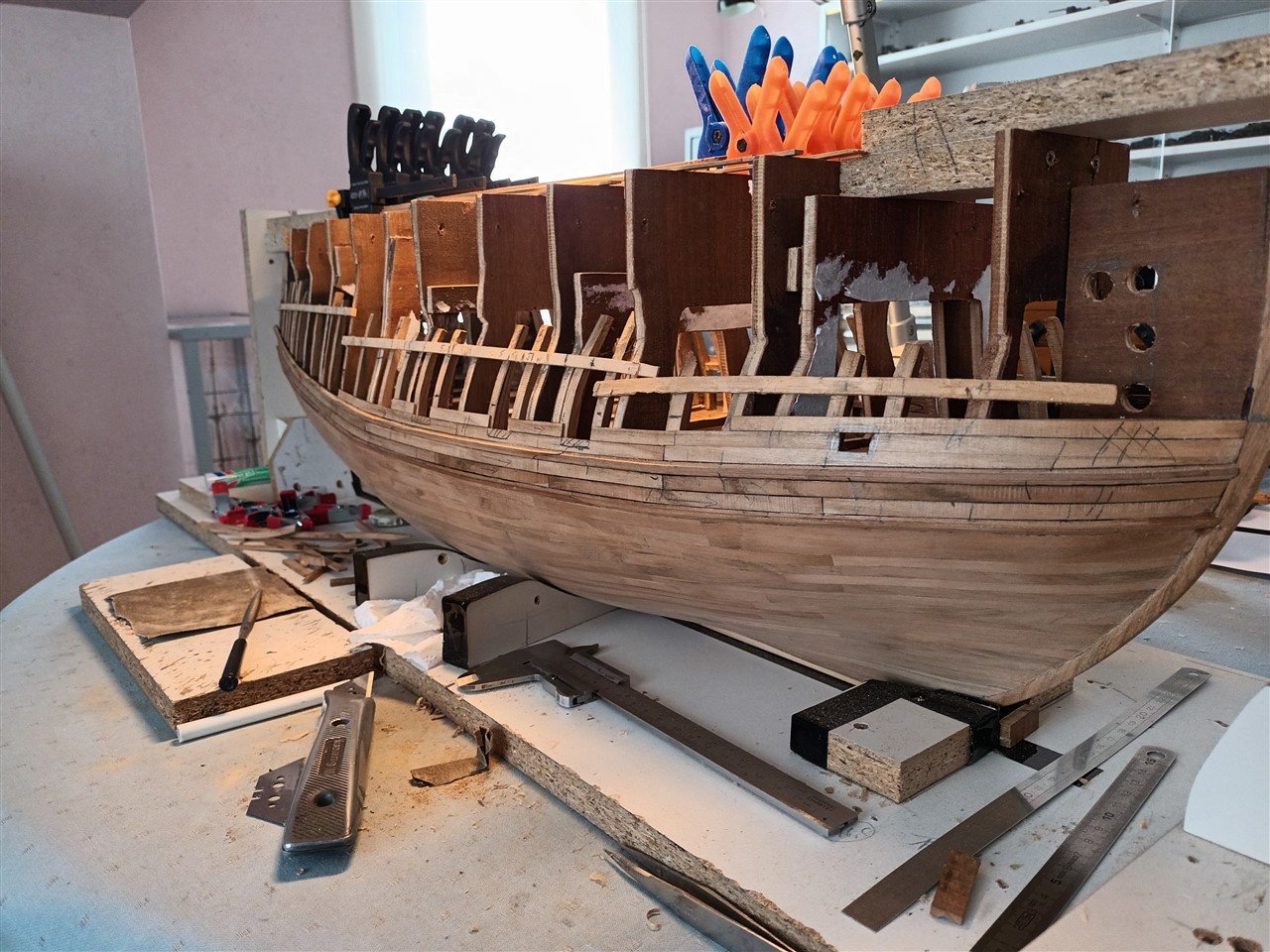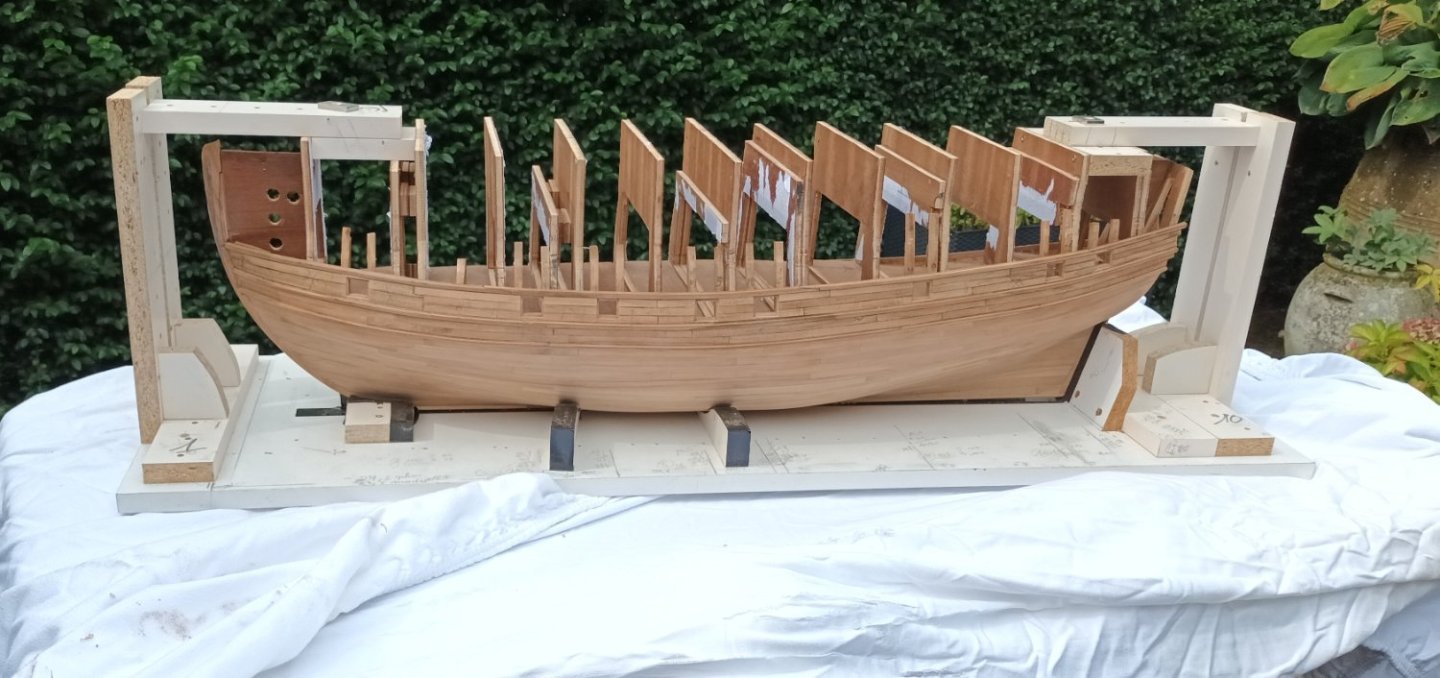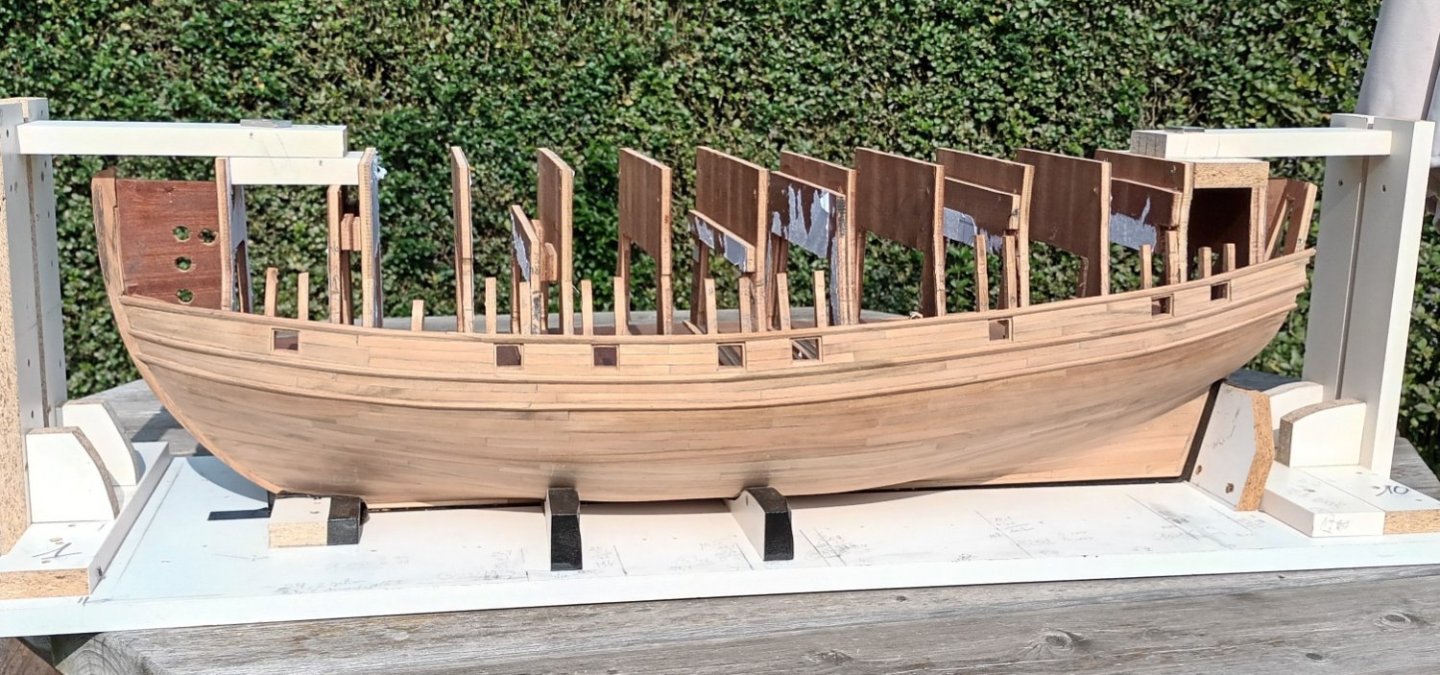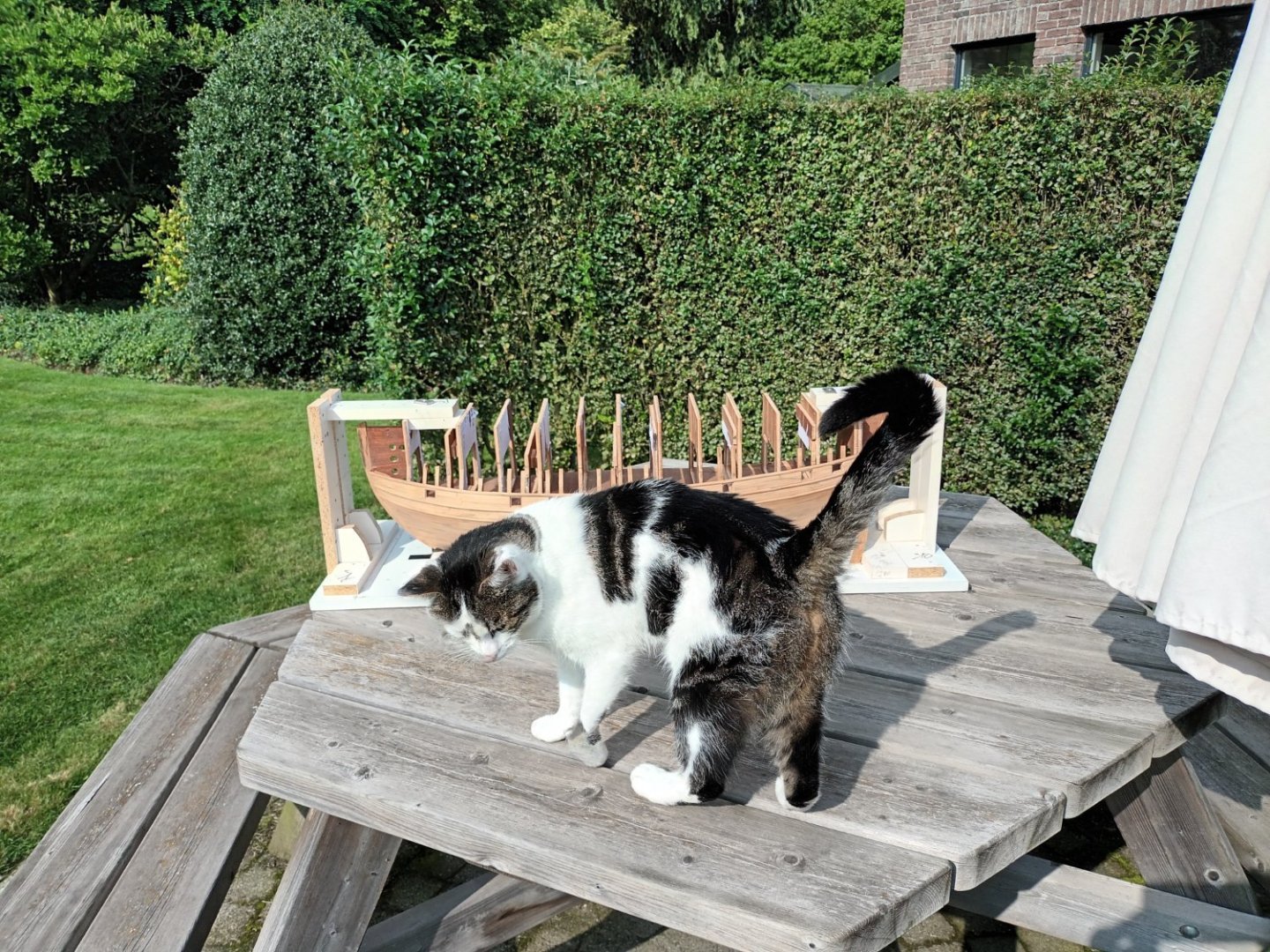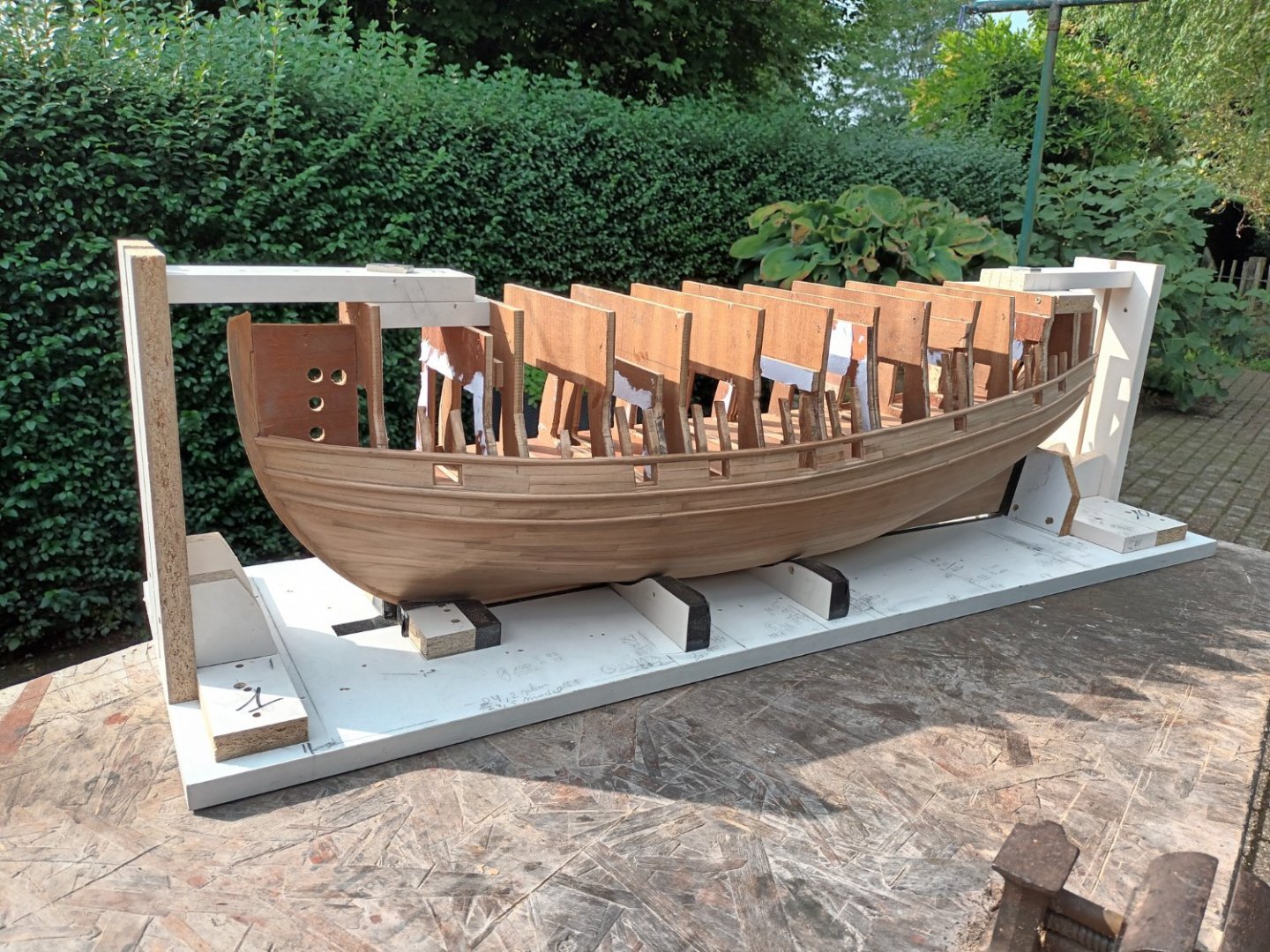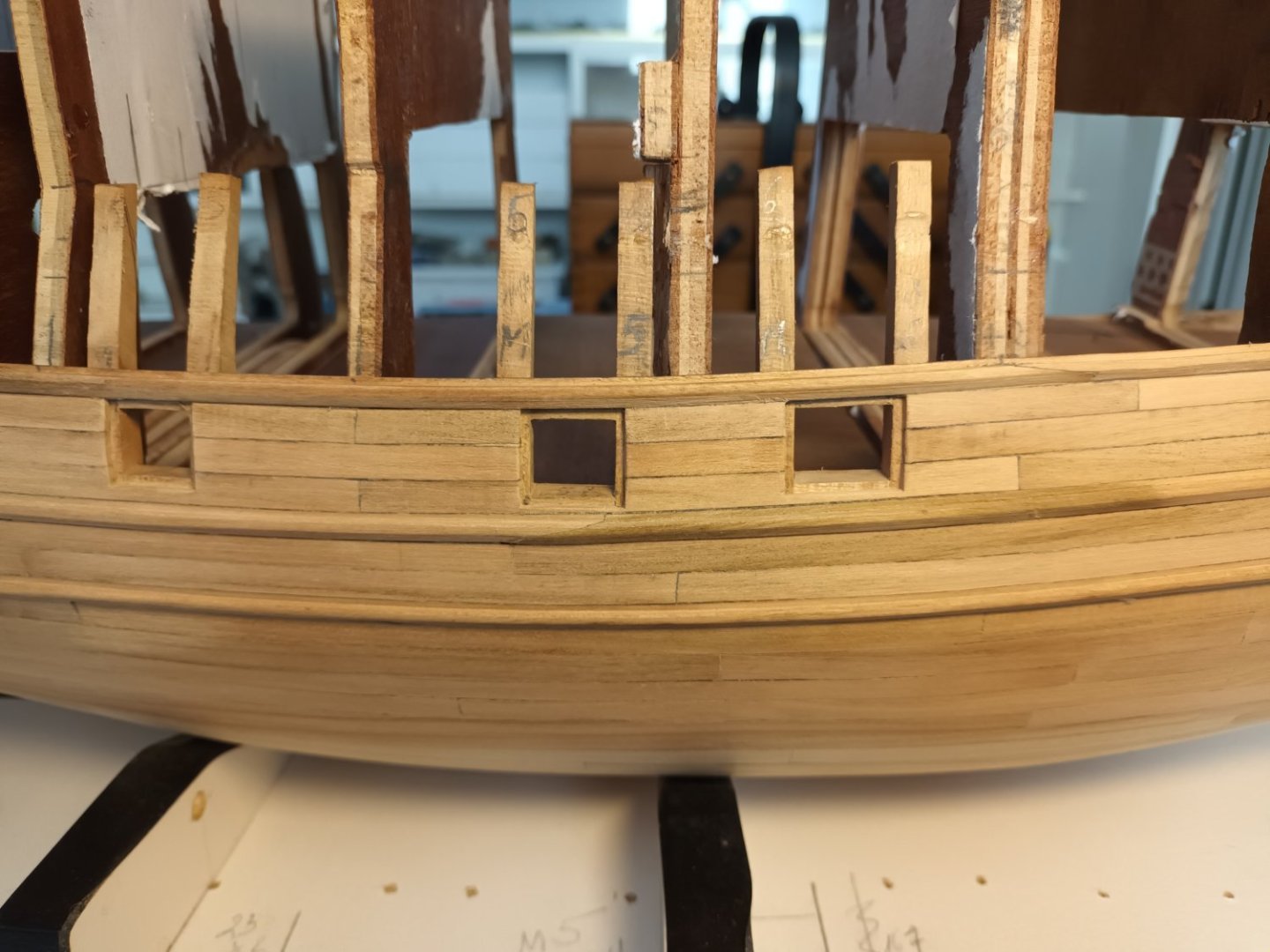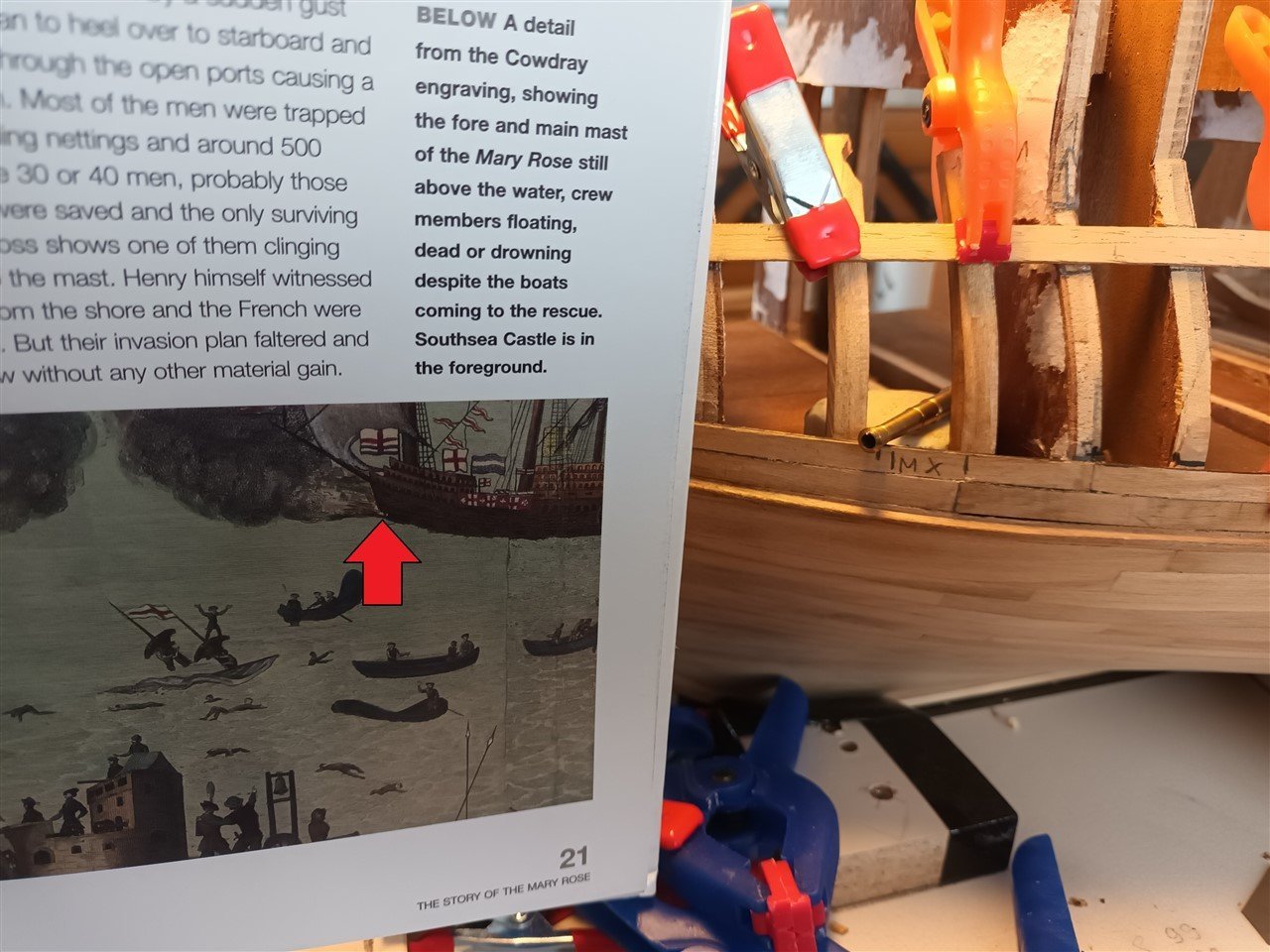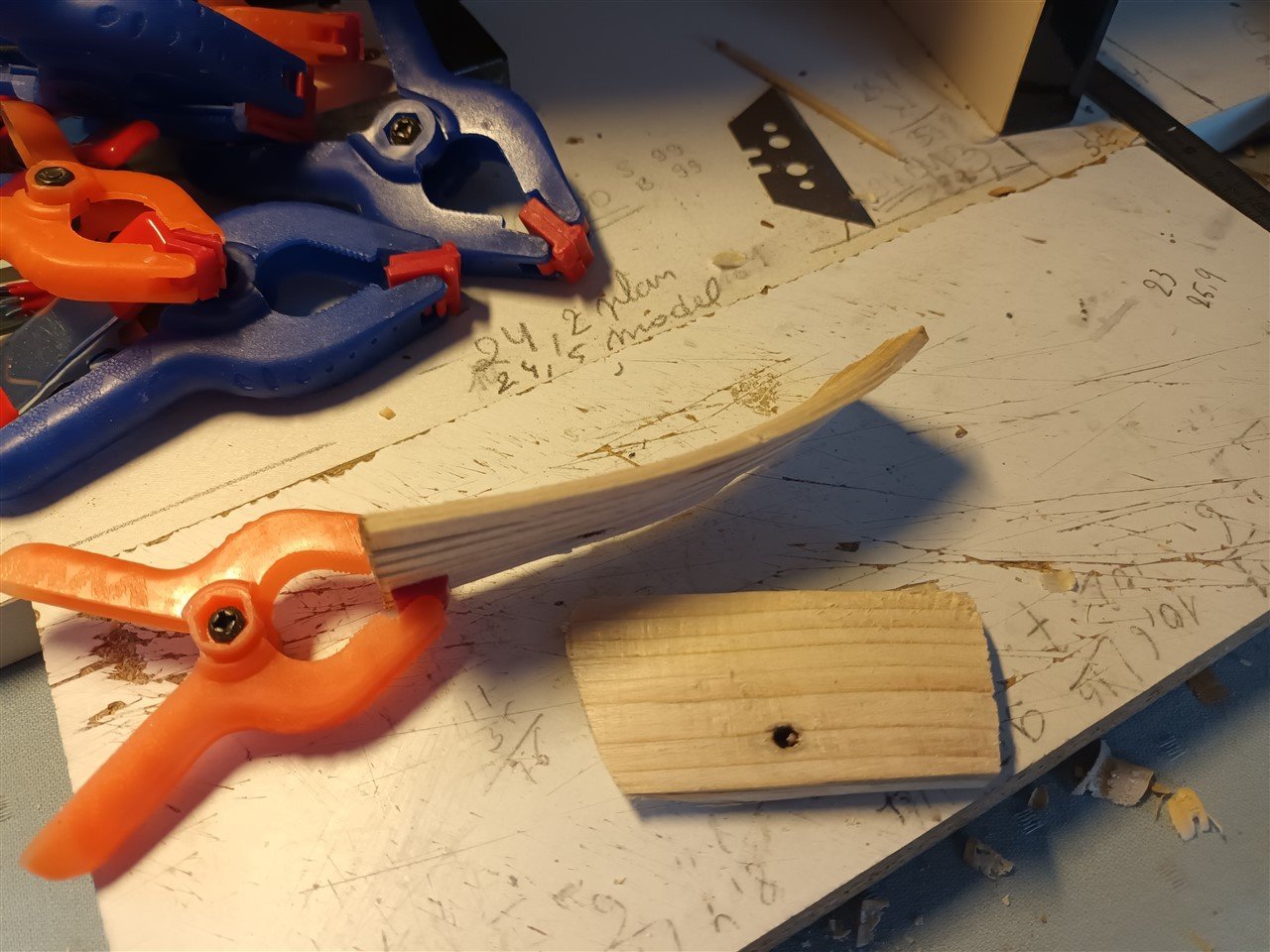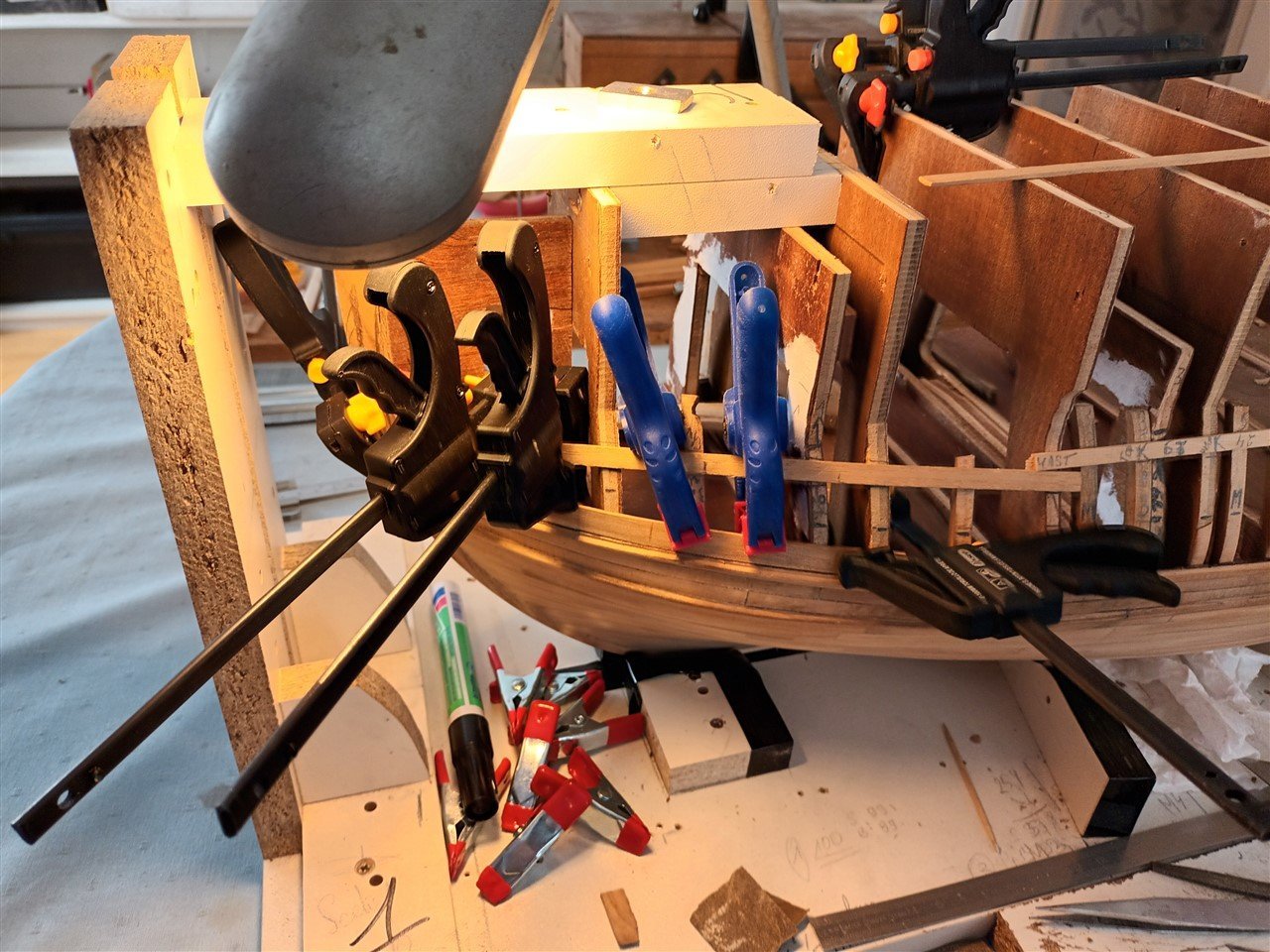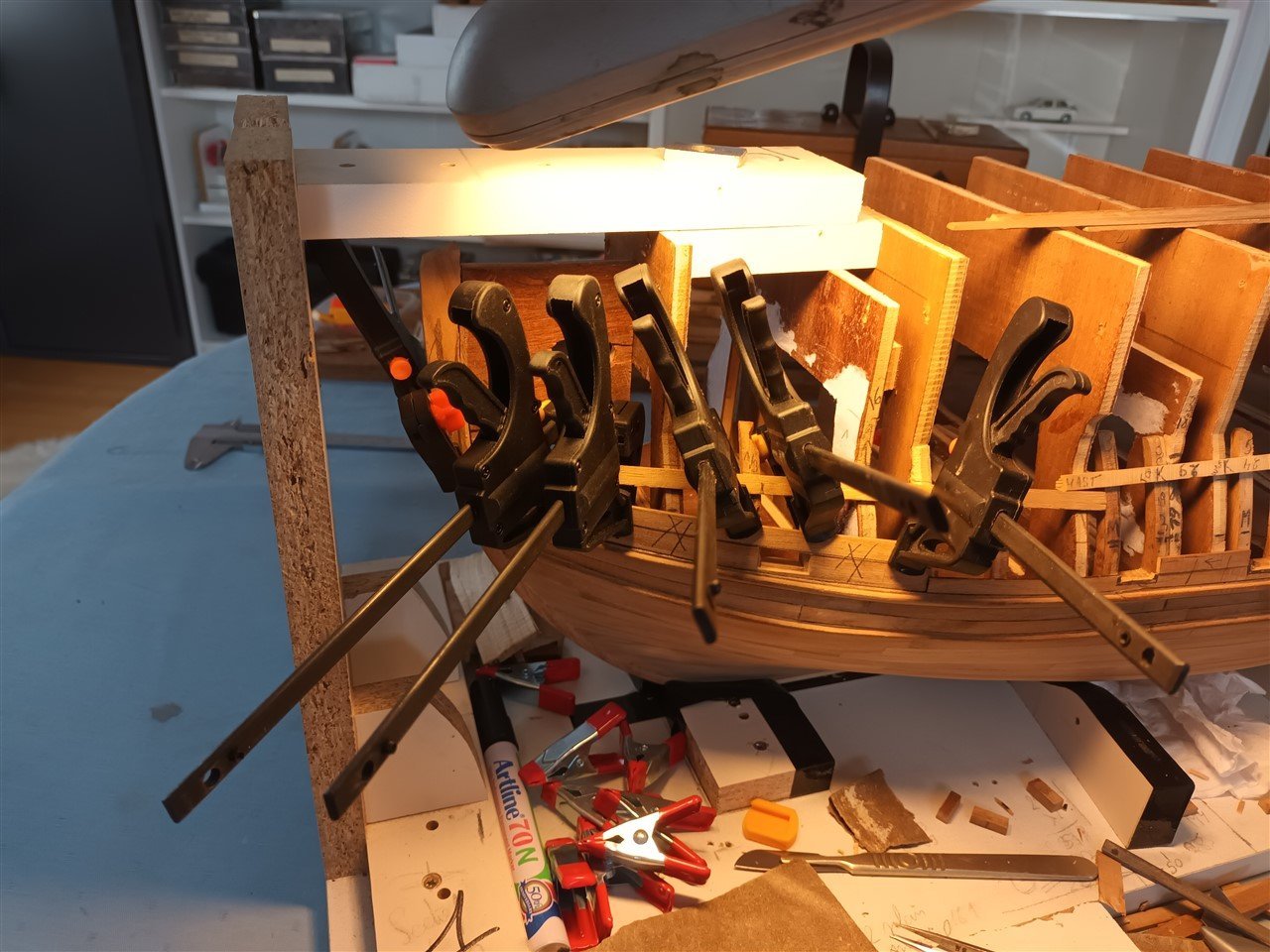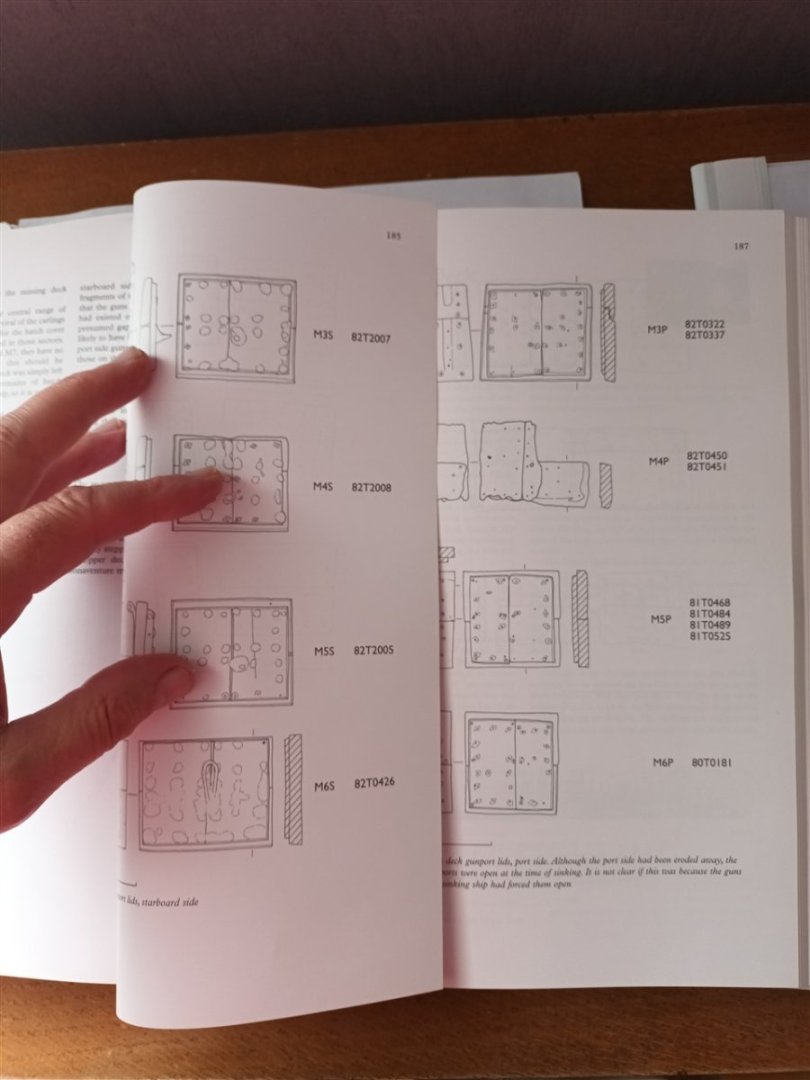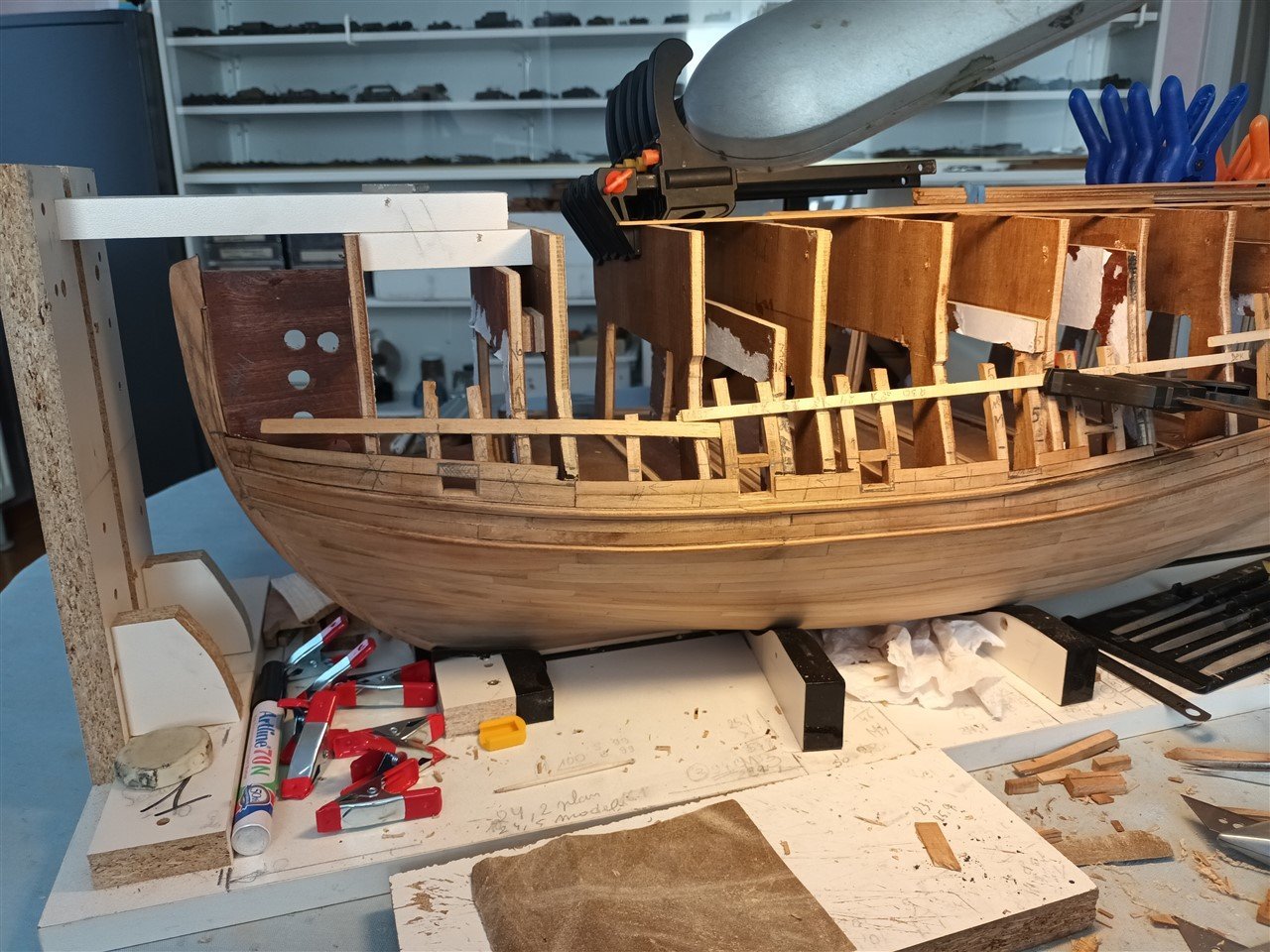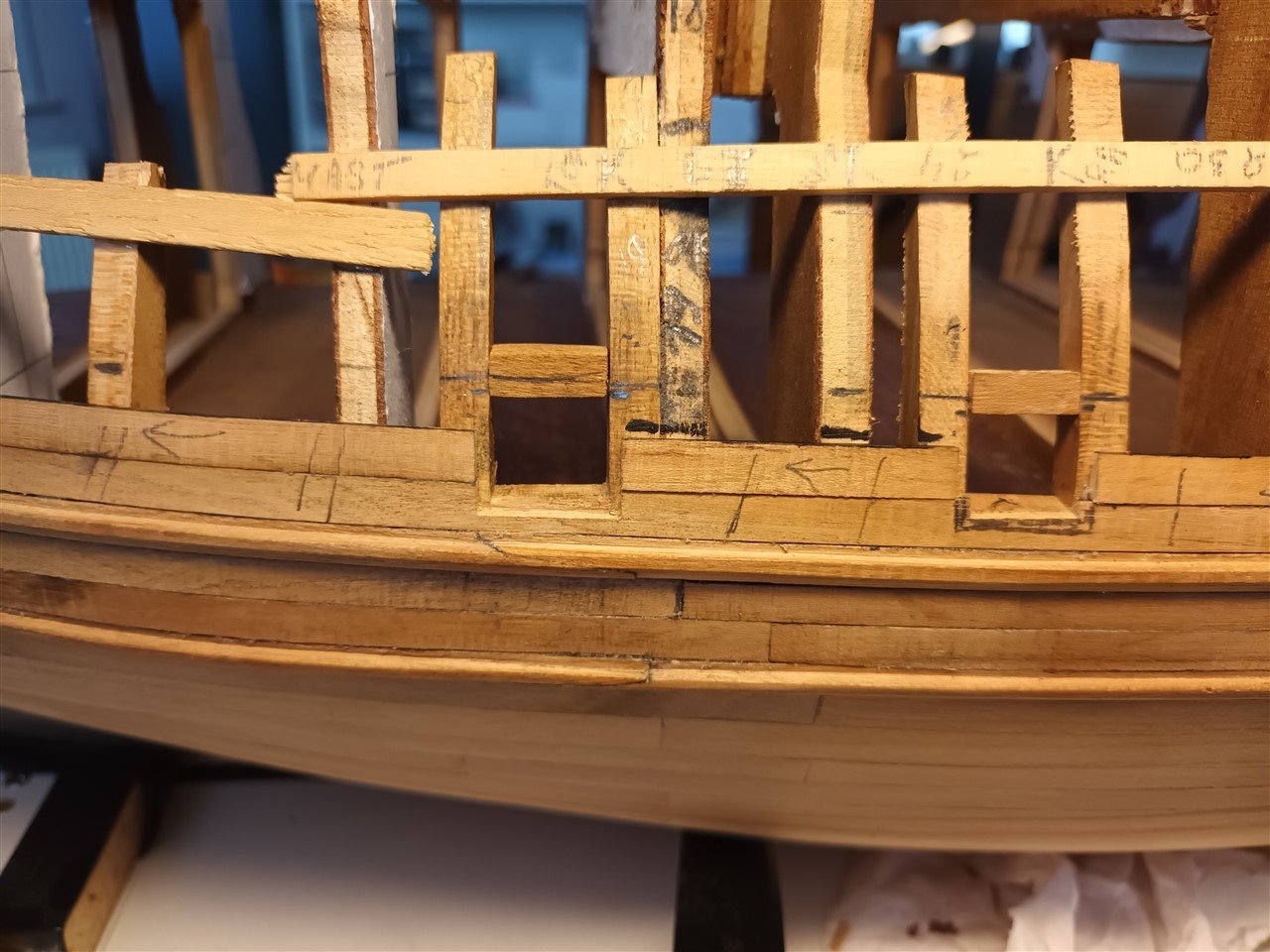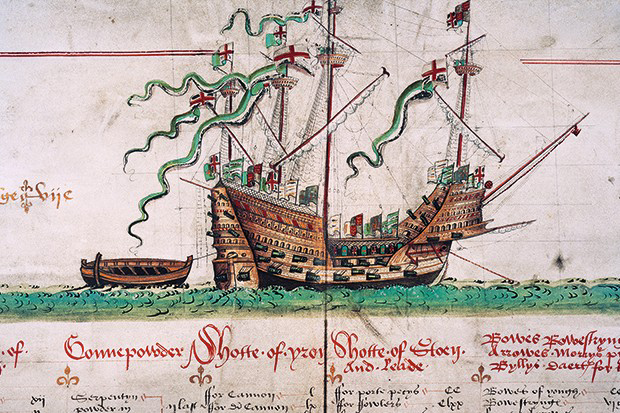-
Posts
4,219 -
Joined
-
Last visited
Content Type
Profiles
Forums
Gallery
Events
Everything posted by Baker
-
Small update The planking of the starboard side goes smoothly. The bulk heads are adjusted in advance and the frames of the cannon ports were already partly made. It's simply taking the dimensions from the port side to the starboard side and start planking. and the laser also comes in handy. I had some sawing work for another project and so I sawed wood for the base plate. Thanks for following
-
Congratulations, a very beautiful model. Thanks for sharing this.
- 208 replies
-
- kitbashing
- Woodcarving
-
(and 4 more)
Tagged with:
-
If you log in to this forum again. I am interested in the Mary Rose cannons
-
-
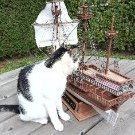
Revenge 1577 by Loracs - Amati - 1:64
Baker replied to Loracs's topic in - Kit build logs for subjects built from 1501 - 1750
A very neat first planking 👍 -

Revenge 1577 by Loracs - Amati - 1:64
Baker replied to Loracs's topic in - Kit build logs for subjects built from 1501 - 1750
Researched the planking of the hull of a galleon for my previous model. (Starts in post 47) -

Revenge 1577 by Loracs - Amati - 1:64
Baker replied to Loracs's topic in - Kit build logs for subjects built from 1501 - 1750
the bottle is not empty yet... Need help ? 😁 -
congratulations on this very nice model. It was very pleasant and instructive to follow this build log.
- 208 replies
-
- kitbashing
- Woodcarving
-
(and 4 more)
Tagged with:
-
With the holidays over, time to start up again. The second wale has now been placed. So now the planking between wale 2 and 3 can begin along with working out the gun ports. Only the hatches of the gun ports have been found on the port side. and it turns out that they did not always have the same dimensions as the starboard side. Discovered too late to adjust, so they stay as they are now. (On their drawings in scale 1/100 they are neatly the same width on both sides...grrr...) The bow cannon should fire fairly well forward (see drawing of the Great Harry). And between the stern and this gun are only 2 planks and not 3 as further aft. I accidentally came across this while chopping wood. The right shape as support for the bow area. Planking between wale 2 and 3 has started. I started on the port side, nothing left of this side. So this is the big exercise before starting on the starboard side. Still a bit messy and a lot of thinking, touch up and sanding, but it seems to be going well this way. Thanks for following, comments and likes
-
Welcome to MSW. (also 59 and retiring next year)
-
-
- 279 replies
-
- Spanish Galleon
- Imai
-
(and 1 more)
Tagged with:
-
if you have room at the channel of the fore mast. Then you can tie both 2 to this channel 1 in use and 1 in spare anchor.
- 279 replies
-
- Spanish Galleon
- Imai
-
(and 1 more)
Tagged with:
About us
Modelshipworld - Advancing Ship Modeling through Research
SSL Secured
Your security is important for us so this Website is SSL-Secured
NRG Mailing Address
Nautical Research Guild
237 South Lincoln Street
Westmont IL, 60559-1917
Model Ship World ® and the MSW logo are Registered Trademarks, and belong to the Nautical Research Guild (United States Patent and Trademark Office: No. 6,929,264 & No. 6,929,274, registered Dec. 20, 2022)
Helpful Links
About the NRG
If you enjoy building ship models that are historically accurate as well as beautiful, then The Nautical Research Guild (NRG) is just right for you.
The Guild is a non-profit educational organization whose mission is to “Advance Ship Modeling Through Research”. We provide support to our members in their efforts to raise the quality of their model ships.
The Nautical Research Guild has published our world-renowned quarterly magazine, The Nautical Research Journal, since 1955. The pages of the Journal are full of articles by accomplished ship modelers who show you how they create those exquisite details on their models, and by maritime historians who show you the correct details to build. The Journal is available in both print and digital editions. Go to the NRG web site (www.thenrg.org) to download a complimentary digital copy of the Journal. The NRG also publishes plan sets, books and compilations of back issues of the Journal and the former Ships in Scale and Model Ship Builder magazines.

